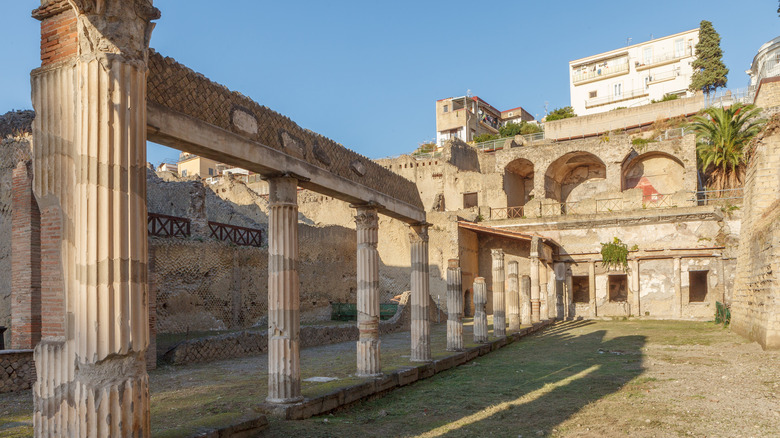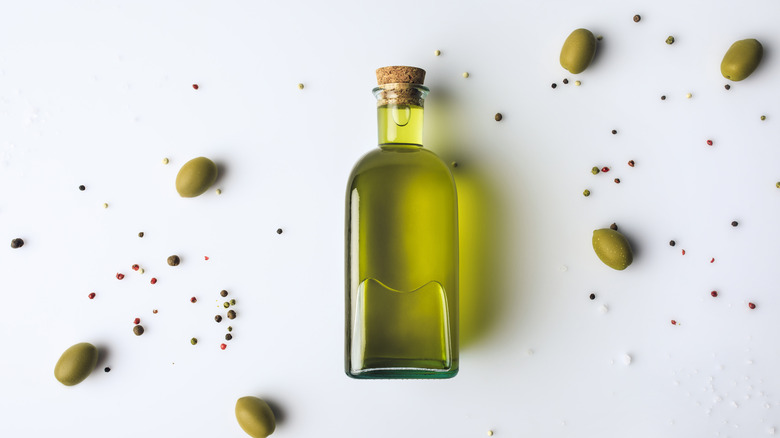What Ancient Romans Really Ate Around Mt. Vesuvius
Ancient lifestyles are a mystery to most of us. When archeologists look back at people from ancient times, they can usually piece together some aspects of the way they lived, what an average day was like, or what tools they used by observing the items found in research sites. However, it's rare that a site is so perfectly preserved that the archeologists can get definite answers about specific aspects of ancient life like an exact diet. The preserved sites near the Roman city of Pompeii, which was a thriving urban center of 13,000 people until Mt. Vesuvius erupted and covered everything with volcanic ash in AD 79, is another story (via Greek Reporter).
It is so well preserved that new discoveries are made to this day, including an entire food shop with depictions of the food sold there. As more parts of Pompeii are unearthed, more clues and remains are found by archeologists. As reported by the Guardian, the best-preserved human remains ever found at the site were recently discovered with hair and bone samples. Paired with evolving technology, the ongoing research and discoveries allow archeologists to find out more about ancient life than ever before. Here at Mashed, we're a little obsessed with what ancient people used to eat. Now, we can say with a good amount of certainty not only what ancient Romans near Mt. Vesuvius ate, but how much of it.
The Ancient Roman diet
New bone analysis from the Mt. Vesuvius eruption zone has shed more light on the diet of Ancient Romans. Science Mag reported that the analysis was conducted on the remains of 17 victims found at Herculaneum, a Roman town on the Mediterranean. They were found in boathouses, where they presumably hid from the eruption until a sudden flash of heat perfectly preserved their skeletons. Previous collagen testing of preserved bones had led archeologists to conclude that ancient Roman men in the area had more diverse diets than women. Analysis of other preserved items and plants led them to realize that the people of Herculaneum ate grains, lentils, beans, cherries, peaches, olives, and over 70 types of seafood.
The new testing isolated specific amino acids in the bones that allow scientists to distinguish isotopes of nitrogen and carbon that can be traced to certain foods, shedding light on the proportions of food the ancient Romans ate and where their calories came from. A quarter of the protein came from seafood, which means the people ate a ton of it. Olive oil made up 12% of the calories consumed, meaning they ate upwards of 20 liters of olive oil a year. The testing also confirmed that men had a more diverse diet with different grains and seafood, possibly due to more time outside the home.

